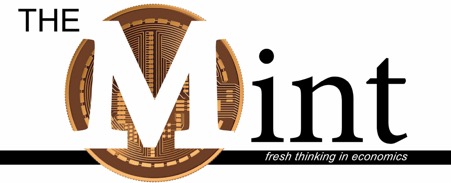Wolfram Elsner looks at the economics in the space between individuals and nations.
For decades, economics has been dominated by two lenses: the micro, which focuses on individual agents, and the macro, which focuses on aggregated national aggregates and their relationships. But what about the space in between — the world of neighbourhoods, communities, networks, and mid-sized groups where culture and institutions take shape? This neglected dimension – the middle ground – may hold the key to understanding how societies cooperate, innovate, and ultimately survive.
Meso groups — large enough to generate collective power, but small enough for people to recognise one another.
Mainstream economics, with its fixation on equilibrium and abstract models of perfect rationality, has largely overlooked this middle ground. Yet in the messy realities of human life, cooperation and trust rarely emerge, neither in atomised markets nor in faceless, anonymous, bureaucratic nation-states. They appear in meso groups — large enough to generate collective power, but small enough for people to recognise one another, to remember past behaviour, build and use reputation chains, and enforce trust.
Anthropology gives us clues. Hunter-gatherer bands typically averaged around 30 to 50 people, nested within tribes of roughly 1,500 to 2,000 individuals. Brain science corroborates this, linking the size of stable human groups to the cognitive limits of the neocortex. Beyond those limits, cooperation frays. Too much anonymity, mobility, and perceived over-turbulence invite free riders (“defectors”), and ultimately may lead to cultural and economic collapse, as well as the failure of states.
At the mesoscale, however, people can build enduring rules of coordination, institutions of cooperation that solve collective dilemmas, and even related norms and shared values. Over time, these rules and institutions may crystallise into ethics, belief systems, or even religions. In short, meso is the crucible of culture, with its arrangements (systems) of social rules, institutions, and norms.
From problems to power
Institutions often start as practical tools. A fishing community, for example, may use informal sanctions to prevent overfishing. Managing a collective social issue, such as governing shared resources or “common-pool resources”, is more complex than just coordinating on traffic-type rules like agreeing to drive on the left or right, when coordination benefits everyone immediately. The historical process of such emergence has already been quite complex, though (why was it left in the UK, rather than on the continent?). But ultimately, solving a simple coordination game merely requires a social rule.
Addressing a commons problem where defection, free-riding, and exploitation are dominant in the short term, necessitates a social rule with an embedded sanctioning mechanism.
On the other hand, addressing a commons problem (a social dilemma game), where defection, free-riding, and exploitation are dominant in the short term, necessitates a social rule with an embedded sanctioning mechanism – “If you free-ride, I will too next time, and we all suffer” – which we call a social institution. Over time, those rules and institutions will become habits, then possibly more abstract norms, and eventually values — whether productive (“We respect the sea.”) or dysfunctional (“We are superior to them.”). At that stage, the original problem to be solved may be forgotten (“We have always done it like that”), but a stabilising cultural scaffolding will still remain.
This process has two sides. On the one hand, institutions stabilise expectations about others’ behaviours, foster trust, support social stability, reduce chaos, and enable innovation to thrive. On the other hand, they risk becoming rigid. Detached from their original purpose of problem-solving, institutions may become ceremonies that merely uphold and reproduce hierarchical differences and power structures. When that occurs, culture shifts into ideology — serving as a justification for elites rather than guiding basic cooperation and problem-solving. Fully rigid ceremonial institutions (ceremonialism) can deteriorate and lead to the collapse of socio-economic systems. History is filled with such failures.
The challenge is to keep institutions alive, adaptive, and meso in scope, a size order based on people’s cognitive and emotional capacities in solving the fundamental collective societal problems.
Cooperation against the odds
The classic lens for analysing cooperation is the prisoner’s dilemma: two rational actors each have a dominant incentive to defect, hoping to exploit the other. If both are equally smart and myopically “hyper-rational”, they end up very poorly together, exploiting and fighting each other. But both would do better if they cooperate.
In one-off games, defection wins. But in real life, interactions are repeated. If there’s a good chance you’ll meet someone again, you may think twice about cheating them, as they may reciprocate your earlier behaviour. This is where the meso dimension matters in a population that must provide basic collective goods to function, as Adam Smith (1759) had already discussed.
In small enough groups, people can remember who cheated, spread reputations, and punish defectors. The probability of “meeting again”—what institutional economists have called futurity — tips the scales. Cooperation can spread through friendly, pragmatic, and problem-oriented trigger strategies, such as tit-for-tat, where agents start by cooperating, retaliate against defectors, but forgive once cooperation resumes.
But cooperation is not only rational — it is innovative.
However, cooperation does not arise automatically. It often depends on a minimum critical mass, typically in the form of self-selecting clusters of cooperators willing to risk exploitation once for greater overall success in the long run. Once that tipping point is achieved, cooperation can spread rapidly through the population. Nonetheless, there is also a maximum critical mass: beyond a specific size, groups become too anonymous, positive expectations of behaviour and trust may diminish, and free riders may regain ground. The optimal point lies within the meso zone.
The agency of cooperation
For cooperation to stick, individuals need more than goodwill. They need these capacities:
- memory, to recall past interactions;
- monitoring, to observe others’ behaviour;
- reputation systems, to share positive expectations of trust and trustworthiness; and
- partner selection, to cluster with other cooperators if necessary.
These mechanisms turn fragile trust into durable institutions. They also explain why well-governed digital platforms, neighbourhood networks, and professional clusters outperform both atomised markets and bloated bureaucracies.
But cooperation is not only rational — it is innovative. To choose cooperation over defection is to break with the default script of self-interest. It requires imagination, curiosity, creativity, and what Thorstein Veblen called the “instinct of workmanship”: the satisfaction of creating something new together. In this sense, cooperation is as much a cultural as it is an economic phenomenon.
The shape of culture
Once cooperation stabilises, its payoff curve is rarely linear. It often follows an S-shape: small gains at first, then explosive growth as synergies kick in, followed by a plateau as resources are exhausted or groups are getting “too successful”, too large, too mobile and turbulent, while, paradoxically, social habits ossify. We are experiencing much of this in current Western societies.
Additionally, too much punishment can lead to a collapse of trust. Too little, and free riders multiply. The art of culture is to balance sanction with forgiveness, stability with flexibility.
These dynamics play out everywhere, mostly tacitly—from Silicon Valley startups to grassroots climate movements, from medieval guilds to online gaming communities, workplace cultures, and neighbourhoods. Success depends less on abstract and formal (legal) national policies than on whether meso groups can nurture trust, adapt rules, and scale cooperation without losing their cultural coherence.
Meso economics
Recognising the meso dimension reframes economics itself. Instead of reducing everything to micro choices or summing up to aggregates and macro statistics, we see institutions as complex emergent structures, irreducible to their components (individual agents). They live in industrial and regional networks, clusters, and groups that self-organise and evolve.
Complexity economics and evolutionary game theory, typically analysed on different network structures, have mapped this terrain, now using agent-based models to simulate when and how cooperation spreads. These tools demonstrate that meso is not just a statistical middle ground — it is a distinct, interactive, and dynamic dimension where culture, trust, and institutions emerge.
During times of global turbulence such as climate change, inequalities, pandemics, and technological disruption, such mid-sized resilience may be our best hope.
For policymakers, this indicates a fundamental shift in perspective. Instead of concentrating solely on national laws or individual incentives, we could design for the “deep structures” of socio-economies, focusing on “meso”: fostering communities, networks, and overlapping, staged local interaction arenas where cooperation can flourish. During times of global turbulence such as climate change, inequalities, pandemics, and technological disruption, such mid-sized resilience may be our best hope. The political system must become more informed, capable, proactive, sufficiently complex, adaptive, and engaged with the interaction system of private agents.
Culture at the right scale
The story of economics is often told as a struggle between the invisible hand of markets and the heavy hand of the state. But between these extremes lies another hand: the emerging common and collective hand of meso groups. It is there, in the friction of repeated interactions, that trust is built, stability plus change develops, productive norms emerge, and cultures evolve.
If we ignore the meso dimension, we risk misunderstanding how societies actually work—and why they sometimes fail. But if we embrace it, we may rediscover the true source of cooperation: not in the abstractions of equilibrium, but in the lived experience of communities, networks, and cultures that are just the right size.



